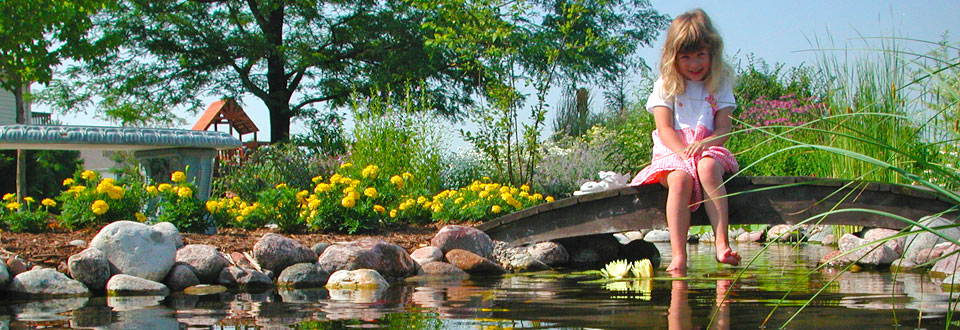
Record high temperatures create a number of challenges for people, pets, plants, and yes, even your water garden. You’ll want to keep a close eye on your pond, especially when the water temperature reaches 80 degrees or higher.
Helping your fish
Warm water has a low capacity for holding oxygen, so you may start to see your fish gasping for air close to the water’s surface, or especially close to a fountain or waterfall. In addition, warm pond water leads to increased activity and that means your fish require more oxygen at a time when it’s least available.
As your fish struggle for oxygen, they’ll become increasingly stressed. And stressed fish are more likely to develop diseases … a scenario you want to avoid.
To optimize fish health during extreme heat, you’ll want to ensure your fish have the best pond environment possible. It all starts with a well-designed water feature. Depth, plant coverage, shade, and circulation should all be considered when building a pond. A minimum depth of two feet is suggested so the bottom can remain cooler.
Ensure you have enough plants
You’ll also want to stock your pond with a lot of plants to provide shade for the fish. A good rule of thumb is to provide plant coverage of approximately 1/3 to 1/2 of the pond’s surface area. Waterlily pads provide great coverage, but if your pond lacks the proper amount, you can easily add floating plants such as water lettuce until the waterlilies fill in.
Optimize circulation
Perhaps one of the most important parts of pond design is circulation. If possible, you’ll want to place your biological filter and mechanical filter across the pond from each other, so that all areas of the pond are skimmed and the water circulated.
And keep in mind that waterfalls, streams, and even fountains play a huge part in the oxygenation of the water in your pond. If you don’t already have a waterfall cascading into your pond, you might want to invest in a fountain that can be added without any construction to the pond.
During these hot, dog days of summer, try some of these tips to keep your pond performing optimally:
- Add oxygen to your pond by placing an aerator or AquaForce® pump in your pond. You can also install a fountain with a pump if your pond doesn’t have a waterfall or stream built in.
- If you feed your fish, feed them in the morning and be careful not to overfeed. Uneaten food decays faster in warmer water and can pollute the pond.
- Be sure to remove dying leaves and flowers before they have a chance to decay in the warmer water.
The bottom line is that you need to keep an eye on your pond and let your fish and plants do the talking. If you have a balanced ecosystem, you don’t need to be checking your pond out everyday, but you do need to check it out every once in a while to make sure your aquatic plants and fish are healthy.
This article originally published by Aquascape

